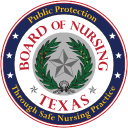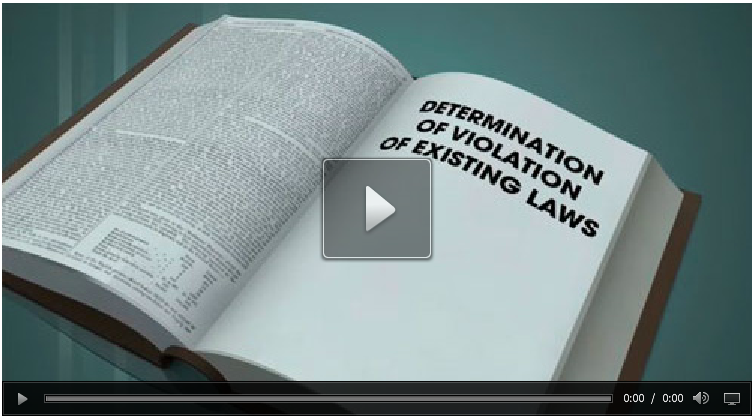Texas Board of Nursing
The Texas Board of Nursing (BON or Board) is responsible for licensing, regulating, and monitoring the status of approximately 260,000 licensed registered nurses and 98,000 licensed vocational nurses. The BON approves 114 nursing education programs for registered nurses and 98 programs for licensed vocational nurses. In 1909, the State of Texas formally recognized professional nursing with the passage of the first Nursing Practice Act (NPA).

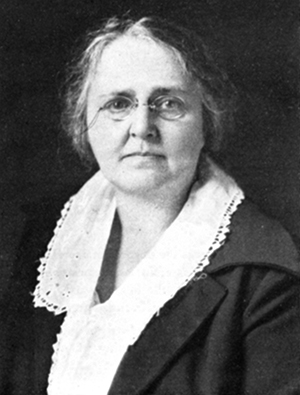
Jennie Cottle Beaty, RN, Superintendent
of Nurses at St. Joseph Hospital in Houston
1907-1909
In 1907, nineteen nurses from around the State of Texas gathered at the Medical College Building in Fort Worth to form the Texas Graduate Nurses’ Association (TGNA Note: The TGNA became the Texas Nurses Association in 1964).
Jennie Cottle Beaty, RN, Superintendent of Nurses at St. Joseph Hospital in Houston, came to the meeting with a copy of the bill which had been enacted in the State of Colorado in 1905 to create the Colorado Board of Nursing. The association elected officers, selecting Mrs. Beaty as their President, then began discussing the various bills which had been filed in states around the country to create boards of nursing.
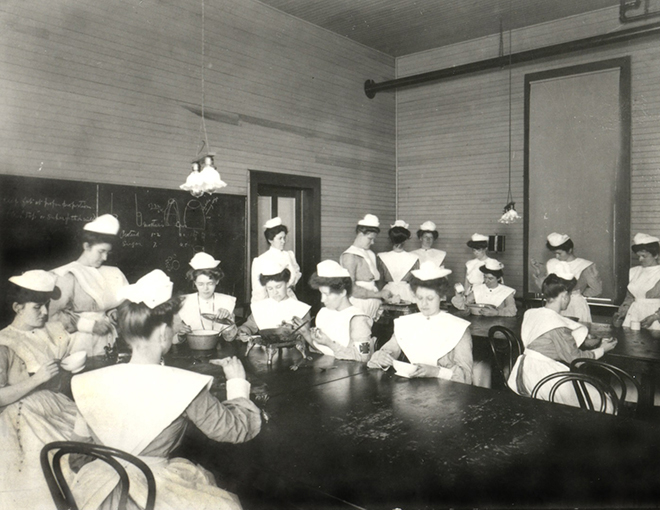
UTMB Galveston c. early 1900s
Other states enacting nursing legislation prior to 1909 included: New York (1903), New Jersey (1903), Virginia (1903), North Carolina (1903), Maryland (1904), Massachusetts (1904), California RN (1905), Connecticut (1905), District of Columbia (1907), Georgia (1907), Illinois (1907), Iowa (1907), New Hampshire (1907), Minnesota (1907), and West Virginia (1907). The association decided they would press forward with the Colorado legislation as the model they would pursue when advocating for similar legislation in Texas. In 1909, the association’s Legislative Committee found a sponsor for their bill. Senator McDonald J. Meachum of Navasota filed Senate Bill 111, “An Act to define and regulate the practice of professional nursing, create a board of nurse examiners for the examination of nurses, prescribe their qualifications, provide for their proper registration, and fix suitable penalties for the violation of this act.” The bill passed through the Senate with minor amendments. Next, it moved to the House of Representatives and was referred to the House Public Health Committee where Mrs. Beaty and her associates testified in favor of the bill. When they left the meeting, following their testimony, the nurses were “all sure the bill would be tabled," according to Mrs. Beaty. Senator Meacham, together with the help of associates in both the House and Senate, persuaded the committee to report the bill out favorably. The bill returned to the Senate with minor amendments and was passed out of the Senate on March 12, 1909. On March 13, 1909, Governor Thomas Mitchell Campbell signed Senate Bill 111, establishing the Board of Nurse Examiners. (NOTE: The Board of Nurse Examiners became the Texas Board of Nursing following passage of House Bill 2426 in 2007. The Texas Board of Nurse Examiners will hereafter be referred to as the BON or Board).
The New Board Met and Set Standards for Nurses
The first meeting of the Board took place on July 20, 1909, at the Driskill Hotel in Austin. The purpose of the meeting was for organization. The members of the Board were: Jennie Cottle Beaty, Fort Worth; M. Rutledge of Dallas; M. Maud Muller of San Antonio; Sara P. Young of Austin; and Clara L. Shackford of Galveston. Jennie Cottle Beaty was elected to serve as the first President of the Board and Clara L. Shackford served as the First Secretary-Treasurer of the Board. The new Board then drew up by-laws and rules to govern its proceedings.
The Nurses Registration Act of 1909 had some notable weaknesses: the Act applied only to individuals using the title "registered nurse," "professional nursing" was not defined, educational requirements for nurse licensure were not specified in the Act, and the Board was not given authority over nursing education.
The first regular meeting of the Board took place on October 27, 1909, in Galveston. In that meeting, 222 applications for registration were considered and approved. All nurses graduating since 1906 and prior to passage of the Act were exempt from examination. The first nurse to become a registered nurse in Texas was Emma Allison who attended school in Fort Worth (See below). The registration fee for nurses was $10. The Examination fee was also $10. While conducting the business of the Board, Board members were paid $5 per day, meals and lodging. The Secretary-Treasurer was paid $200 per year.
During the first years of the Board, board members traveled to different cities to hold their meetings and administer examinations. The Board did not have an office in an office building until 1929 when it opened one in Waco. Prior to that, meetings were held in Galveston, Dallas, San Antonio, Waco, Temple, Fort Worth, Austin and Houston. The Board relocated to San Antonio in 1930.
1911 - Senate Bill 334 Amended the Nursing Registration Act
Senate Bill 334, which became effective in June 1911, made several changes concerning the Board. Two members of the five-member Board were required to have two years of experience in educational work among nurses. The examination fee was reduced to $5. Applicants for the examination were required to have graduated from a chartered training school, presided over by a graduate nurse. The Michigan Board of Nursing asked that the Texas Board recognize nurse registration from Michigan and the Texas Board approved it.
1912 - A committee was appointed to prepare a suggested curriculum for training schools. The first examinations were held in San Antonio, Waco, Temple, Fort Worth and Houston for five candidates. New board members were appointed every year. The Board later adopted a course of study produced by a committee of the American Hospital Association.
1913 - Texas Board voted to reciprocate with the Kansas Board of Nursing.
1914 - Letters were sent to all physicians stating advantages of registration with a list of RNs in Texas.
1915 - Each Board member examined the training schools in their district once a year.
1916 - The Board meets with the Attorney General where it was agreed that the Board would appoint a training school inspector to visit schools.
1920 - Massachusetts and Utah request a reciprocity agreement and the Board agreed to reciprocate.
1923 - Senate Bill 40 Granted BON Authority over Nursing Education
The Board gained authority over nursing education with a requirement added that applicants for licensure must be graduates of an accredited school approved by the Board of Nursing. The appointment of a paid educational secretary was provided for and board members were required to have at least three years educational experience.
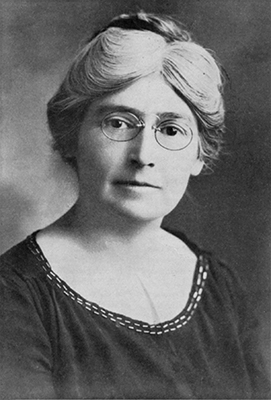
Louise Dietrich
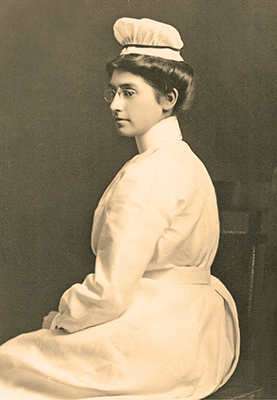
First Educational Secretary
Miss A. Louise Dietrich was selected as the first Educational Secretary for the Board. Senate Bill 40 initially picked up 24 amendments, some of which were controversial. 20 amendments were later removed, which allowed passage of the bill only 45 minutes before the Legislature adjourned
1924 - Office rent of $5 per month and a $3,000 annual salary were paid to the Educational Secretary.
1925 - All Texas statutes were re-codified. Laws relating to professional nursing were codified as Articles 4513 through 4528 of Vernon's Civil Statutes. This was the first and last systemic rewrite of the Nursing Practice Act (NPA) until 1999 when the NPA was codified as Chapter 301 of the Texas Occupations Code. Senate Bill 426 established a fee of $20 for obtaining licensure by endorsement from another state, district, territory or country.
1926 - 1927 - The nursing curriculum was 450 hours.
1929 - Senate Bill 75 Brought Staggered Terms for Board Members & Temporary Permits
The terms for Board Members were changed to one member serving four years, two members serving three years and two members serving two years. Nurses licensed in other states could work in Texas under a temporary permit for three months or less upon payment of a $2 fee. Nurses graduating from an accredited nursing program could obtain a permit to practice until the next examination was administered by the Board. Applicants for nursing school must have graduated from high school.
1931 - Senate Bill 126 Increased the Number of Board Members from Five to Six with Staggered Terms
The Board increased from five to six members with two members serving six-year terms, two serving four-year terms and two members serving two-year terms.
1932 - There were 5,612 nurses licensed; 2,332 nursing students; and the number of nursing schools was 56.
1934 - The nursing examination took two and a half days to complete. At a national convention it was reported that Texas gave more exam subjects than any other state. State Boards were trying to reduce student nurse schedules from 56 to 48 hours a week.
1935 - House Bill 329 Measure Changed Standards for Hospitals with 25 Beds.
House Bill 329 amended Article 4518 declaring all general hospitals of not less than 25 beds with average daily occupancy of 15 patients that taught the Board-prescribed course of study to be “accredited schools.” The minimum educational requirements were changed from “two years of continuous study” to “three full years of work and study.” Twenty-two states refused Texas reciprocity because the change let small 15-25 bed hospitals add a third year of service from nursing students.
1937 - There were 48 accredited schools of nursing in Texas with 2,288 students enrolled.
1940 - There were 45 accredited schools of nursing with 3,048 students enrolled.
1942 - For the duration of World War II, nursing schools could accept students from 17 years of age to 35. Acceptance of married women whose husbands were in the service was at the discretion of the schools.
1947 - The National League for Nursing (NLN) contacted the Board to see if schools were prepared to take Test Pool Examinations in 1949. The Board office moved to Austin from San Antonio.
1948 - The Board discussed a bill for the licensing of practical nurses. Other boards of nursing were contacted to see how they handled the applications in the event that it came under the jurisdiction of the Board.
1949 - Re-registration Fee set at $1 by Senate Bill 43
Nurses were required to re-register their licenses each year at a cost of $1. The failure to re-register deemed one an illegal practitioner subject to suspension or revocation. The The National League for Nursing (NLN) contacted the Board about adopting an integrated exam, but the Board was not ready to adopt it yet.
1950 - The Board voted to use NLN "Test Pool" exam, except for psychiatric nursing in 1951 and to use the state exam in Chemistry, Microbiology and Psychology for examinees who did not have three or more hours of college credit in those courses. The entire exam was used in 1952.
1951 - Board of Vocational Nurse Examiners established with Passage of House Bill 47
Representative Lamar Zivley of Temple was the author of House Bill 47, which created the Texas Board of Vocational Nurse Examiners. The bill was signed into law by Governor Robert Allen Shivers. The Board included membership of nurses and a physician.
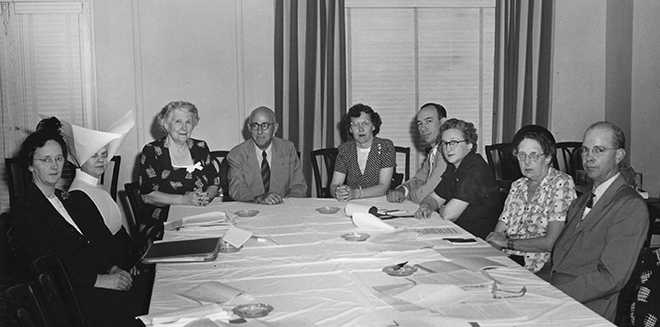
1951 - Board of Vocational Nurse Examiners
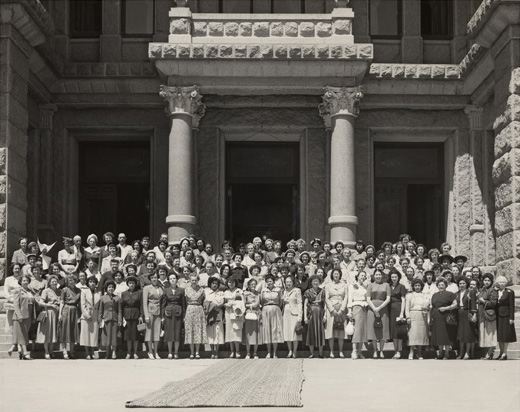
1951 - First Graduating Class of Vocational Nurses in Texas
1953 - Board members and employees were required to execute a loyalty oath. Increasing numbers of "security checks" were being run on registrants by the FBI and Army Intelligence Service so duplicates of records had to be made to keep copies of information on nurses.
1954 - The University of Texas was designated by the Southern Regional Planning Board to develop a graduate program which included majors in teaching, supervision and administration.
1956 - The American Nurses' Association recommended that the Board no longer use schools of nursing for conducting the examinations. The Board opposed the recommendations.
1957 - The National League for Nursing notified the Board they could no longer use schools of nursing or faculty of those schools to conduct the exams. Hotel spaces in Dallas and Fort Worth were secured for the exams.
1958 - A new design of the state curriculum was presented at the Texas League for Nurses Convention.
1959 - BON Given Full Authority to prescribe the Course of Study for Nursing Education Programs
Senate Bill 88 granted the Board specific authority to prescribe the course of study for nursing schools including both theory and clinical. It was also given greater accrediting authority over education but was prohibited from setting length of programs at less than two or more than four years. These changes undid the 1935 amendment enacted by House Bill 329. Five nursing schools planned to convert to four year academic programs in 1960 using the curriculum plan unveiled in 1958.
1961 - Licensure extended to Foreign Nurses
Licensure by endorsement was extended to nurses licensed by foreign countries and U.S. territories and possessions. Nurse applicants from foreign countries had been granted reciprocity as early as 1921 when the Board made a "liberal interpretation of the law which grants reciprocity to applicants registered in other states."
1966 - The Board adopted the policy of requiring Social Security Numbers for applicants for licensure.
1967 - Professional Nursing Defined by Senate Bill 242
Professional nursing was defined in SB 242. This was the first time since originally enacted in 1909, that the NPA contained a definition of professional nursing. The definition was based on the model definition that was then being recommended by the American Nurses Association. SB 242 further detailed the Board's role in disciplinary proceedings by listing conduct by nurses, including felony convictions, intemperate use of alcohol, drugs or unprofessional conduct, which would result in sanctions including suspension, revocation, or fine. In 1967, the State Auditor's Office recommended that the Board modernize its recordkeeping processes which were burdened by the renewal process. The Board requested a fee increase to pay for needed updates which included computerizing records.
1969 - Nursing Practice Act Becomes "Practice-Control" Act Following Passage of Senate Bill 476
The NPA changed from a “title-control” to a “practice-control” act regulating not only persons using the title “RN” but anyone engaged in the practice of professional nursing. Unlicensed persons were prohibited from practicing professional nursing unless explicitly exempted from the NPA. Because of this change, the exemptions to the NPA were expanded to exempt other licensed practitioners, LVNs, etc. Some hospitals argued this exemption applied to all care in a hospital since care in a hospital was done “at the instruction of a physician.” The exemption was relied on by hospitals to employ large numbers of foreign-educated nurses who did not hold a Texas license. The Texas Attorney General ruled in 1983 that the exemption applied only to persons to whom a physician delegated care in accordance with the Medical Practice Act.
The NPA was also amended to require that only three Board members have teaching experience instead of all six and to provide for the Board to employ an Executive Secretary (now Executive Director) rather than appoint one of its members to serve in that capacity.
Adding a definition of professional nursing in 1967 and getting the NPA amended to be a practice-control act in 1969 were the result of a 10-year legislative effort by the Texas Nurses Association.
The Board drafted a position statement in response to many inquiries from prison inmates wishing to become nurses after their release. The statement required a full and unconditional pardon and restoration of civil rights prior to issuance of an RN certificate. In 1969, the Board hired an office manager and bookkeeper.
1970 - A new license form was adopted by the Board which utilized the same license number each year for licensees. In April 1970, the Board began producing a newsletter, Report from the Board of Nurse Examiners, which was produced on a quarterly basis.
1971 - The Board adopted a motion to accept the Canadian Nurses' Association Testing Service Examination. License certificates were done through a printing process with the Executive Director signing the certificates when issued.
1973 - Senate Bill 831 established a system of variable expiration dates for licenses. The Board, because of increased work load, hired its first nursing consultant. The Water Development Board assisted the BON with automating the renewal process.
1974 - A three-time failure rule was drafted requiring exam takers to show evidence of further preparation prior to taking the exam a fourth time.
1975 - House Bill 627 set the fees charged by the Board for a range of services provided by the Board. The Board adopted a new rule requiring nursing faculty to possess a master's degree by 1980.
1976 - A rule was adopted that beginning with the 1977-78 academic year, 75% of first time candidates from a nursing program must achieve a passing score on the State Board Test Pool Examination.
1977 - The Board adopted rules for the Standards of Nursing Practice; procedures for informal hearings were adopted concerning nurses working without a current license; and legislation was enacted which changed the minimum time for nursing programs from "two calendar years" to "two academic years."
1978 - First ANP Program Approved; NCSBN Formed
The first advanced nurse practitioner educational program in Texas was approved by the Board. Houston Baptist University Advanced Perinatal Nurse Practitioner Program enrolled 15 students in 1978. Guidelines for advanced nurse practitioner were issued by the BON in September 1978. The National Council of State Boards of Nursing (NCSBN) was formed as a separate non-profit entity from the American Nurses' Association Council of State Boards of Nursing. Mrs. Margaret Rowland, Executive Secretary of the Texas BON was elected to the Board of Directors of the new NCSBN.
1979 - Rule-making Authority Granted to Board by SB 273
A number of significant amendments were made by SB 273 including: increasing the Board’s rule-making authority to “regulate the practice of professional nursing;” changing the definition of professional nursing to include the “observation, assessment, intervention, evaluation, rehabilitation, care and counsel and health teachings of persons who are ill, injured or infirm or experiencing changes in normal health processes;” giving injunctive power and authority to probate disciplinary penalties; and requiring all fees collected by BON be placed in the State Treasury and expended only as appropriated by the Legislature. Board staff began work preparing for the first Sunset Review. Work began by staff to define "unprofessional conduct" and, after testimony at the January 1980 Board Meeting, the rule was adopted.
1980 - Rules for Advanced Nurse Practitioners Established and Contested; CNATS Accepted
Rules and requirements relating to advanced nurse practitioners were established in April 1980. Suits were quickly filed against the Board by the Texas Hospital Association and the Texas Medical Association over the new rules. The case was successfully resolved in 1986 by the Texas Supreme Court in favor of the BON. The new Canadian Nurses' Association Testing Service Exam (CNATS) was accepted by the Board with a passing score of 400. An investigator position approved by the Board was filled.
1981 - First Sunset Review Changed Composition of Board
The Board underwent its first sunset review. Amendments to the NPA that resulted included: adding three public members to the Board; requiring recognition of the three types of educational programs (diploma, ADN, and BSN); requiring that the three educator members of the Board be representative of the three types of educational programs; and expanding the rule-making authority to include defining which acts constitute the practice of professional nursing.
1982 - NCLEX Exam Adopted
The first consumer members to the Board are appointed. They were: Cleve Bachman, Leo Johnson, and Peggy Brown. A new numbering system for licenses was introduced in response to large numbers of out-of-state examinees and foreign nurses. In July 1982, the Board adopted 1600 as the passing score for the NCLEX exam, the new comprehensive criterion referenced examination for nurses.
1984 - The Board celebrated its Diamond Jubilee 75th Anniversary in Austin on May 11, 1984.
1985 - HB 900 Grants Authority to Establish Nursing Peer Assistance Program
House Bill 900, enacted in 1985, gave the authority to enact rules establishing a peer assistance program for nurses. Rules were enacted in July 1986 which required a $1 fee to be collected from nurses to fund the peer assistance program.
1987 - SB 1160 Adds Peer Review and Mandatory Reporting Requirements; Agency authorized to purchase in-house computer
Senate Bill 1160, also known as “Professional Nursing Quality Assurance Act,” added mandatory reporting and nursing peer review provisions to the NPA. Texas was one of the first states to pass peer review legislation for RNs. RNs were exempted from the radiologic technologists licensing act. The Board gave approval to purchase an in-house computer for the agency in March 1987. In July, rapid deposit was authorized. The agency also began annual planning sessions relating to feedback received from constituents relating to the regulation of nursing.
1988 - Advanced Nursing Practice Committee established as an ongoing committee. The Board also authorized the hiring of an in-house attorney instead of relying soley on outside counsel.
1989 - Continuing Education Authority Granted by SB 622; Peer Assistance Addressed by SB 981; Financial Aid for Nurses Through License Fee Added by SB 1001; APNs Gain Limited Prescriptive Authority
The Board of Nurse Examiners and Board of Vocational Nurse Examiners were given authority to require continuing nursing education for license renewal by Senate Bill 622. A financial aid program for nurses was established by Senate Bill 1001 and initially funded with a license surcharge, and a special study of the nursing shortage authorized. Senate Bill 480 amended the definition of professional nursing to include carrying out orders of podiatrists. APNs were given limited prescriptive authority at sites serving medically underserved populations. The Board implemented its computerized phone system in 1989. Through the automated system, licensure verification could be done 24 hours a day via the phone system. The agency began holding workshops throughout the state concerning the NPA, functions of the Board, Peer Review, continuing education, and the investigatory process.
1990 - Texas Board Received National Award
The National Council of State Boards of Nursing (NCSBN) recognized the Texas Board of Nurse Examiners with the 1990 Member Board Award. Numerous Texas contributions were cited which lead to receiving the award including the many leadership roles held by agency staff, publications and research involvements, membership on state and national committees and presentations on the role and responsibilities of the NCSBN and the Texas Board.
1991 - Pronouncement of Death by RNs Allowed; Limited Criminal Background Checks Granted by HB 1101
RNs were given authority to determine death by passage of Senate Bill 823. House Bill 1101 granted authority to do criminal background checks in conjunction with investigation of a complaint, and a process was established for students to obtain declaratory order of eligibility for licensure.
1993 - Board faces Second Sunset Review; Health Professions Council Established; Peer Review & Mandatory Reporting Addressed; NCLEX Exam Computerized; Nursing CE Auditing Begins
The Board underwent Sunset Review for the second time. Sunset staff met with board staff in 1992 and Sunset recommendations were enacted in 1993. The Sunset Bill, HB 2180, added: training requirements for new board members; a toll-free number to report a complaint against a healthcare professional; requirement of an independently-validated national examination to be used as a part of the examination process, informal proceedings to resolve complaints against nurses; monitoring of nurse compliance with disciplinary orders; authority to establish rules relating to reporting of minor incidents; authority to temporarily suspend licensure pending a full investigation; and other changes related to the disciplinary process. A Health Professions Council was created to coordinate activities of the various health professions licensing boards with operation beginning in July 1993. HB 756 addressed peer review laws and mandatory reporting. Nursing peer review laws were amended to require that: three-fourth of the committee’s members be RNs, the nurse being reviewed be afforded minimum due process and at least one member of the committee have a working familiarity with area of practice of the nurse being reviewed. Mandatory reporting was amended to give authority to adopt rules to minimize reporting of minor incidents and duplicative reporting and to require mandatory reporting by peer review committees to the Board. The computerized NCLEX exam (NCLEX-CAT) began testing in Texas in July, 1993. In September 1993, random auditing of nurses began to verify compliance with the 20-hour continuing education requirement. The CE requirement was added by rule in 1991 following 14 months of study by the Continuing Education Advisory Committee which began in 1989.
1995 - Peer Review Expanded to LVNs by HB 883; APNs Gain Prescriptive Privileges in Physician Primary Care Sites; Agency Moves to Hobby Building with Other Licensing Agencies
Peer review was expanded to include LVNs by passage of HB 883. The Board of Vocational Nurse Examiners was required to develop rules relating to LVNs licensed in other jurisdictions practicing temporarily in Texas. RNs were given protection from retaliation for refusing to engage in reportable conduct. The qualification relating to practice experience of practice members of the Board were clarified. HB 883 also added proof of good professional character as a requirement for licensure and mandatory reporting was expanded to include students experiencing problems with chemical dependency. Limited prescriptive authority for APNs was expanded by Senate Bill 673 to include a physician’s primary practice site and facility based practice. The Board began referring to advanced nurse practitioners (ANPs) as advanced practice nurses (APNs) in an effort to avoid confusion caused by the nurse practitioner title. In 1995, the Board moved to its current location, the William Hobby Building in downtown Austin, which also houses other health occupation licensing agencies.
1997 - Safe Harbor Protection added by SB 1081; Competency Pilot Programs and APN Educator on Board Added by SB 617; BON Launches Web Site
Senate Bill 1081 added enhanced protections for RNs who refuse to engage in reportable conduct by giving them the right to request a determination by peer review as to the RN’s duty and providing the RN a safe harbor pending that determination. Senate Bill 617 granted authorization and funding to conduct pilot test mechanisms to help assure that RNs maintain their competency after initial licensure, and that RNs are knowledgeable of the laws and regulations governing their practice. The Diploma educator position on the Board was changed to an APN educator position which was filled by appointment of Dr. Linda Rounds in 1999. SB 617 also gave the authority to collect information needed to identify students who may be disqualified or licensure upon graduation. The Board launched its web site in April, 1997. Today, 80-90 percent of nurses renew their licenses online. The BON web site now includes online examination, endorsement, and renewal applications as well as licensure verification.
1999 - Nurse Licensure Compact Enacted by HB 1342; NPA Moved to Texas Occupations Code by HB 3155
The Nurse Licensure Compact was adopted with passage of House Bill 1342 making Texas one of the first states to begin the implementation of a system of multistate licensure for nurses. The Compact became effective January 1, 2000. With passage of House Bill 3155, the Nursing Practice Act underwent a rewrite as part of being codified into the Occupations Code. Senate Bill 1340, regulating CRNAs administering anesthesia in outpatient settings, required creation of a registry and inspection of anesthesia equipment in outpatient settings.
2000 - 110,000 Nurses Eligible for Multistate Privilege; BON Customer Service Group Undergoes Cross-Training
The Nurse Licensure Compact, effective in January 2000, led to passage of new BON Rule 220 and required nurses to complete and notarize sworn declaration forms to be eligible for multistate privilege. By the end of FY 2000, 110,000 nurses had completed and returned the declaration forms to the Board. In response to increasing numbers of phone calls (254,000 in FY 2000), the BON created the Customer Service Group utilizing cross-training of Customer Service and Licensing staff to provide better responses to callers during peak times.
2001 - Nursing Shortage Measures Enacted by SB 572; Hepatitis C CE Requirement Added by HB 2650
Senate Bill 572 addressed the nursing shortage by establishing a program for the Texas Higher Education Coordinating Board (THECB) to award funds to nursing programs providing resources to enroll additional students, assure the retention of qualified faculty, including providing faculty salaries, and encourage innovation in the recruitment and retention of students. SB 572 also created the Nursing Workforce Data Center to study the nursing shortage but did not add provisions to fund the Center. A requirement for two hours of continuing education related to Hepatitis C to be obtained between 2002 and 2004 was added by HB 2650. Senate Bill 1166 amended the Medical Practice Act (MPA) to expand the types of sites that qualify for prescriptive authority for advanced practice nurses. Language included prescribing at alternate sites and provisions for the Texas State Board of Medical Examiners to grant a waiver for the site and/or supervision requirements. The NPA was amended to indicate that the Board recognized national certifying bodies for Registered Nurse First Assistants (RNFAs) and recognized organizations that approve or accredit RNFA educational programs.
2003 - RN and LVN Boards Combined to Create a Single Board of Nursing by HB 1483; Criminal Background Checks for Nurse Graduates and Endorsees Enacted by HB 2208; Pilot Studies of Innovative Nursing Practice Applications & Continued Competence Authorized by SB 718; Bioterrorism CE Added; Prescriptive Authority for APNs Expanded to Include Schedule III-V Controlled Substances; Nursing Workforce Data Center Moved to SHCC and Funded by Renewal Fees
A single board of nursing and licensing act was created for RNs and LVNs following passage of HB 1483. The combined 13-member Board included members from both boards and the Board of Vocational Nurse Examiners was abolished in February, 2004. Texas joined 45 other states with combined boards of nursing. Nurses were licensed and regulated under the Nursing Practice Act. Safe Harbor Nursing Peer Review and all the other patient advocacy protections afforded RNs were extended to LVNs. Use of the generic title “nurse” was restricted to use by RNs and LVNs and titles such as “nurse aide” and “nurse assistant” were limited to unlicensed personnel functioning under the delegated authority of an RN. HB 1483 also added the one-time requirement that RNs and LVNs take two hours of continuing education in bioterrorism. Dementia training requirements were added for nurses working in facilities providing care to dementia patients by House Bill 776. The BON began conducting criminal background checks on candidates for nurse licensure by examination and endorsement in 2003 following passage of House Bill 2208 which granted authority to conduct FBI criminal background checks as part of the licensing and licensing renewal process. Senate Bill 718 gave the BON authority to conduct pilot programs and evaluate systems designed to encourage identification of system errors.
Prescriptive authority for APNs was expanded by House Bill 1095 to include controlled substances, Schedules III-V. APNs were added to the standardized credentialing of providers.
2004 - A Single Board of Nursing Regulating RNs and LVNs Emerges; Criminal Background Checks Increase Number of Investigations
In July 2004, the Texas Board of Nursing met for the first time as a single board of nursing regulating licensed vocational nurses and registered nurses under 13 board members including nurse educators and consumer members. Board members appointed by the Governor to the new combined board included former members from the Board of Vocational Nurse Examiners (which ceased to exist in February 2004), the Board of Nurse Examiners and new appointees. The entire fourth floor of Tower Three of the William Hobby Building was now a single board of nursing. The number of staff employed by the Board increased from 55 employees to 81 employees. Staff from both boards worked together to draft new agency rules relating to all nurses, arrange offices, combine information technology resources, and merge the day-to-day operations of the two former boards. The new combined board began conducting criminal background checks on LVN licensees by examination and endorsement.
2005 - Vocational Nurse Redefined and NLC Expiration Repealed by SB 1000, Criminal Investigations Unit Established by HB 1366; Retired Nurse License Status enacted by HB 2680; Nursing Faculty Incentives Enacted by SB 132
Senate Bill 1000 made several amendments to the NPA including: addition of a definition of “vocational nursing” to clarify the directed scope of practice and supervision requirements for LVNs; clarified that conduct exposing a patient to risk of harm requires reporting only when conduct creates an unnecessary risk; specified facilities’ mandatory reporting requirements with respect to temporary agency nurses; and made the Nurse Licensure Compact permanent.
House Bill 1366 established a criminal investigations unit within the BON to access National Crime Information Center (NCIC) data during investigations; added automatic revocation of nurse licenses for a variety of criminal offenses including certain felonies; permitted the BON to impose emergency restrictions on licensees; and permitted action based on deferred adjudication judgments in nurse criminal cases. House Bill 2680 reduced the licensure requirements for retired nurses whose practice is limited to volunteer charity work.
Senate Bill 132 directed the Higher Education Coordinating Board to conduct a study of retention rates in Texas nursing education programs and created financial incentives for nursing faculty including tuition reduction for children of faculty and preceptors and a home loan program. The practice environment of nursing was addressed through several bills. A Safe Patient Handling Law (SB 1525) was passed making Texas the first state in the nation to pass such legislation.
2006 - Agency Undergoes Sunset Review; Background Checks Included All Nurses Renewing Licenses; Volunteer Nurse Status Enacted by Agency Rule.
The Board of Nursing responded to Sunset Review, required for all agencies every twelve years, which included: preparation of a self-evaluation report, interviews with Sunset staff, gathering of feedback from constituent groups served by the Board and responding to additional information requests of the Sunset Commission. Following Sunset Review, recommendations were made to the agency and to the legislature.
In the January 2006 Board of Nursing Bulletin, it was announced that all nurses renewing their licenses were required to undergo criminal background checks. Twenty to thirty percent of nurses renewing their licenses each month were randomly selected to undergo the criminal background check process (Background checks for all nurses are expected to be completed by the year 2013). The Board enacted a new type of licensure status, Volunteer Retired Nurse, where a nurse 65 years of age or older, whose license is inactive, may perform voluntary charity care as a nurse providing that they obtain ten hours of continuing education credit every two years and pay a registration fee of $10.00.
2007 - HB 2426 Carries Sunset Measures for Third BON Sunset Review; Jurisprudence Exam Requirement Added; Advanced Practice Registered Nurse Licensure Compact Enacted; and Nurse Continuing Education Requirements Focus on Type I CE
Following Sunset Review for the third time in the agency's history, the Board of Nursing responded to recommendations by the Sunset Commission and legislation drafted in response to Sunset Commission recommendations. The Board's Sunset Bill was House Bill 2426. The bill: (1) continued the Board for 10 years, (2) changed its name from the Board of Nurse Examiners (BNE) to the Texas Board of Nursing (BON), (3) reduced, but did not eliminate, the role that the BON has historically played in the regulation of nursing education, (4) changed the way impaired nurses involved in a practice violation are reported, (5) addressed BON’s use of arrest and convictions in disciplining nurses, (6) set a jurisprudence exam requirement for new licensees, (7) adopted the APRN Multistate Licensure Compact for persons applying for a nursing license, and (8) gave the BON more flexibility in implementing targeted CE. Legislation (SB 993) initiated by the Texas Nurses Association made substantial changes to mandatory reporting and nursing peer review including: (1) simplifying definition of conduct subject to reporting, (2) requiring peer review committees to identify the extent to which external factors affected an incident when an employer reports a nurse, (3) authorizing greater sharing of information between nursing peer review and patient safety committees, and (4) clarifying the protections and remedies nurses have when advocating for patients. The nursing shortage was addressed for the fourth consecutive session with over $20 million being appropriated to nursing education programs. The dedication to nursing of certain tobacco lawsuit settlement funds was extended until 2011. The BON was given authority to require that all 20 hours of CE for licensure renewal be Type 1 (SB 993).
2008 - The Nursing Jurisprudence Exam Goes Online; Paperless License Renewals Implemented in September; New Continuing Education Rules Implemented in November; Late Renewals Allowed Online
Board staff completed development of the Nursing Jurisprudence examination and the exam went online in the Fall of 2008. All nurses seeking Texas nurse licensure by exam or endorsement must pass the exam before obtaining licensure. Staff, in conjunction with the e-learning company Enspire Learning, developed a prep course for takers of the Jurisprudence Exam. The Jurisprudence Exam requirement originated in the BON Sunset Bill (HB 2426). Printing of paper licenses for nurses renewing their licenses was discontinued September 1, 2008. Paper certificates are still printed for new nurse graduates and licensees by endorsement. Continuing education requirements changed for nurses in November when Type II continuing education was no longer accepted for license renewals. Nurses renewing their licenses one to ninety days late were allowed to renew online after July 1, 2008.

2009 - Texas Board of Nursing's 100-year anniversary
2009 – Texas Board of Nursing celebrates 100-year anniversary; holds board meeting at site of first meeting in 1909; historical nursing items displayed in lobby of William Hobby Building; 100-Year Gala held at Bob Bullock Museum; agency responds to enacted legislation.
The Texas Board of Nursing celebrated the 100-year history of the agency by hosting an exhibit on the history of nursing in Texas from 1909 to 2009. The exhibit was held in the William P. Hobby Building in Austin and included exhibits, historic photographs and posters, nursing attire, old textbooks, nursing pins, and equipment used by nurses. The July 2009 meeting of the Texas Board of Nursing was held at the Driskill Hotel in Austin, site of the first meeting of the Board of Nursing in 1909. The Board also held a gala at the Bob Bullock Museum in Austin which included historical exhibits and presentations by: a representative from the Governor’s Office; Representative Susan King, RN; Katherine Thomas, MN, RN, FAAN; and Board President, Linda Rounds, PhD, RN.
Acknowledgements
A special thanks to Jim Willmann, Texas Nurses Association; Jennie Cottle Beaty, RN, The History of the Graduate Nurses Association 1907-1931; and Carl Disher, Texas Board of Nursing, who assisted with research. Photos appear courtesy of the Texas State Preservation Board.
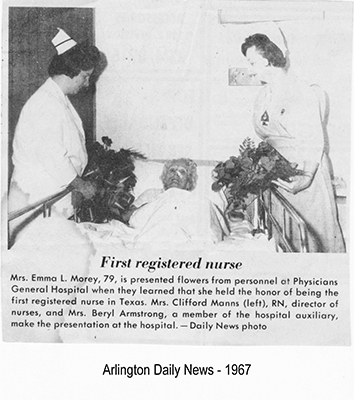
The First Nurses in Texas:
Emma Allison - The First Registered Nurse Licensed in Texas
Emma Lucinda Allison was the first Registered Nurse licensed in Texas. She graduated from Fort Worth Medical College in 1909. Emma practiced nursing in Texas and Oklahoma. While in Texas, she worked as a public health nurse in Wichita Falls. She stopped practicing nursing after getting married but returned to working in nursing during World War II.
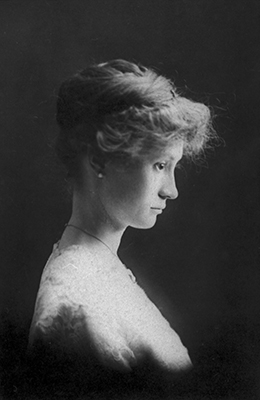
Emma Allison
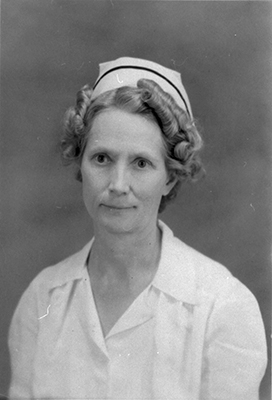
First Registered Nurse Licensed in Texas

Emma Allison - The first Registered Nurse Licensed in Texas
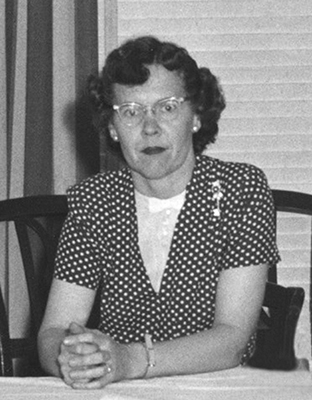
Frances McCoulskey - The first LVN
Approved in Texas
Frances McCoulskey was approved on November 24, 1951 as the first LVN in Texas after completing training at the Shannon West Texas Memorial Hospital in San Angelo. She was appointed by Governor Allan Shivers to the Board of Vocational Nurse Examiners and served until September 1955.
In 1951, the State of Texas formally recognized licensed vocational nursing with passage of House Bill 47 authorizing the issuance of licenses to licensed vocational nurses. The Texas Board of Nursing is established pursuant to V.T.C.A., Occupations Code, Chapters 301, 303, and 304.
This marks the Board’s 104th year of providing service to the people of Texas. Two key elements to the Board’s continuing success are innovation and its ability to anticipate change within the health care and regulatory arenas. The Legislature has, throughout the 100 years following the enactment of the NPA, amended the Act to address changes in health care and nursing practice. Timely amendments have ensured that the State’s definition of nursing reflects contemporary practice; the Board’s disciplinary authority expands as practice becomes increasingly complex; and the Board’s accountability to approve nursing education programs is appropriate. Public safety and access to qualified practitioners have been central themes in statutory revisions.
